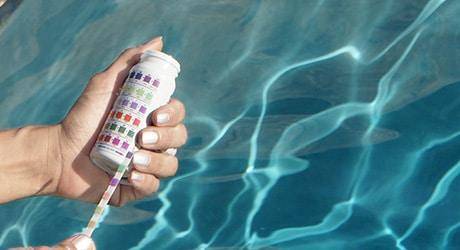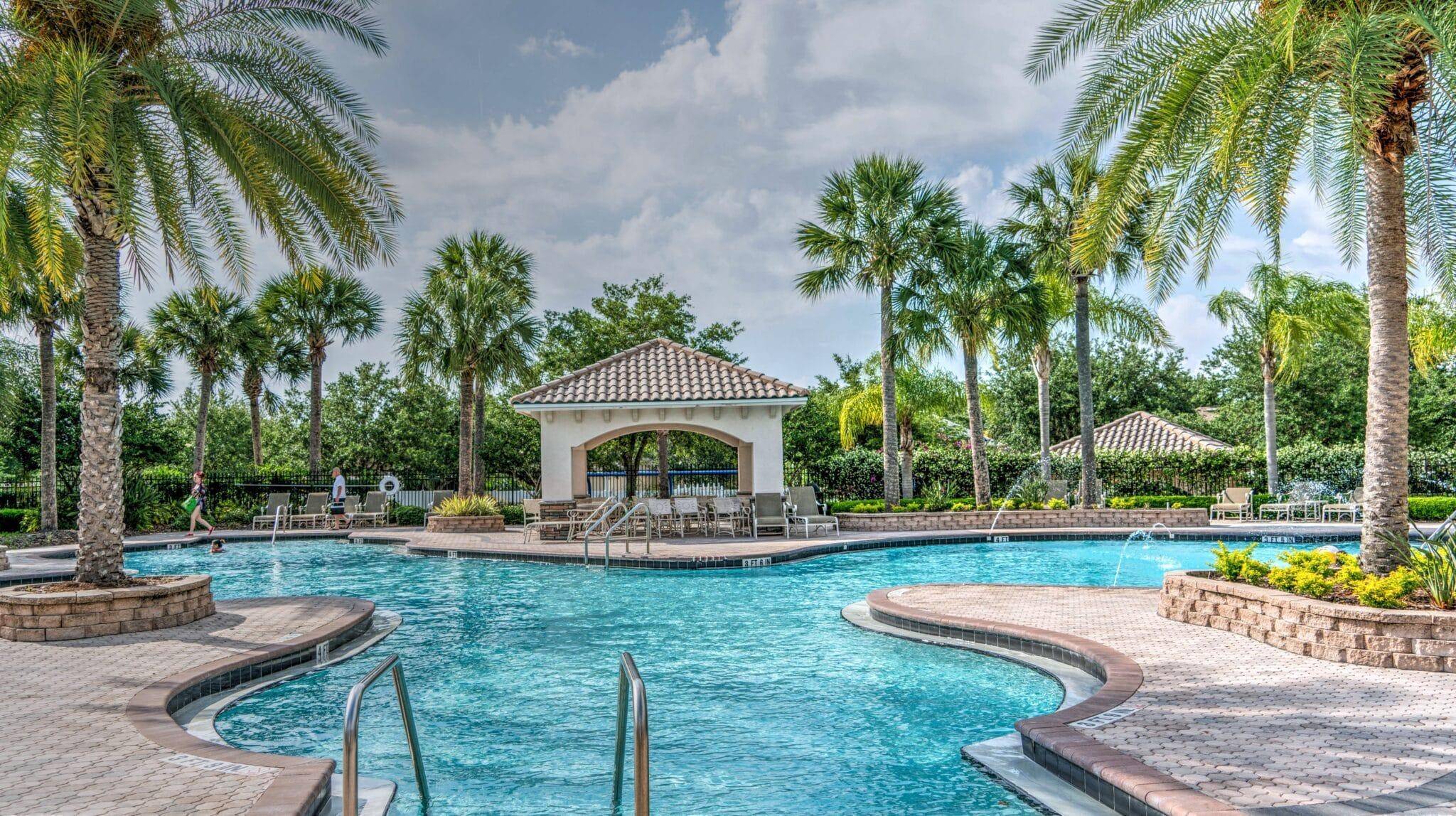Table of Contents
How To Lower pH In A Swimming Pool-Know All You Need To Do
Wondering how to lower pH in a pool to make your swimming sessions more beneficial? It has been a regular question everywhere and there has been an important need to lower the pH of your pool.
As a rule and saying, a balance should be there in our life and every activity we perform to acquire the best results we could ever have, isn’t it? Your swimming pool’s pH is as necessary as balancing other things, you will get to know soon why we are emphasizing so much on it.
As a rule, the pH you would like to maintain should be in the range of 7.4 to 7.8. This pH value is nearly neutral but more towards the basic. If you feel the pH in your swimming pool is getting higher, let me suggest you some amazing tips and remedies about how to lower pH in a pool.
Let’s dive into it, before that you should know why exactly it is so important to keep the pH nearly neutral.
Effects Of Higher PH value Of Pool

what could be potential reasons that pH above 7.8 is neglected and advised by experts not to opt? For starters, you can understand that it is not at all healthy. If your pool has a pH value above 7.8, here are some potential troubles you might face in the coming days.
- You will constantly hear complaints from swimmers about their eyes stinging, skin getting dried, and they will feel sticky. Using remedies on how to lower pH in a pool becomes highly important.
- You will witness that the pool has somewhat become hazy or cloudy. In this state, it would never appear appealing to swimmers or other people who have just come to enjoy in the pool.
- The coloring in water becomes very less effective when the pH becomes higher.
- You would want to add chlorine to solve the issues but that would become very costly and is not at all pocket friendly.
- Lower ph in the pool will result in the growth of unwanted algae and bacteria.
- When the pH rises above 7.8, we know that it has become basic or alkaline which makes the water hard. This will result in the formation of scale due to deposits of calcium.
- Building up of scale will cause the pipes and fillers to clog in your pool. This will further cause the motor to fail or leak.
You may not want to deal with such problems in your pool, so why not try to prevent any such issue in the future by lowering the pH of your pool as soon as we come to know about the issue.
How To Lower pH In A Pool?

Before proceeding with the list given in this article on how to lower pH in a pool, make sure to test the water in your pool at first. You can purchase a normal pool test kit or as a pool owner, you might already have one. This helps you check the pH, total alkalinity, and acid demand in your pool.
Once you have found out using your pool tool kit that the pH of water has gone too high, you should put all your attention towards methods that could possibly help you in restoring the balance. How to lower pH in a pool using chemicals that are acidic in nature? Find out.
Let’s know the details of methods or products you can use on how to lower pH in a pool.
1. How To Lower pH In A Pool Using Sodium Bisulfate

Sodium bisulfate is also known as dry acid. Follow these instructions carefully to find out the usage.
- Based on the initial testing you have conducted measure the accurate amounts of sodium bisulfate needed. Read all the instructions given on the label by the manufacturer and start performing what you need to do. We would suggest you use the only 3/4th of what is suggested because it will give you room for correction.
- You will find sodium bisulfate in the form of powder usually.
- Do not do this task on a windy day as it can blowback on your clothes and skin which could be harmful.
- When you are adding it, keep in mind to remain as close as you can to the water.
- Apply it all on the corners over the water and return the jet site for it to spread all along in the pool.
- After giving it 10 or 15 minutes, it will spread and dissolve evenly everywhere in the pool.
- Wait for 6 to 7 hours and then using your pool test kit again test the pH and alkalinity of water. Do not wait for more than 24 hours to carry out this test.
2. How To Lower pH In A Pool Using Muriatic Acid
Adding acid to lower the pH makes sense totally because the pH has shifted towards alkalinity. If sodium bisulfate is not available or has not worked well for you, another acid to use is muriatic acid. Let’s see how to use this one.
- Look for protective gear in your houses such as your goggles and gloves. If you do not have them, simply borrow from neighbors or buy a new one because muriatic acid is believed to be a strong corrosive, which makes it mandatory to protect yourself.
- Again, go through all the instructions on the labels carefully and measure the amount accordingly to know the needed quantity at first use.
- When it comes to adding muriatic acid to your pool, there are 2 ways you can follow. The first one includes turning the pump off and pouring slowly and steadily at the deep end.
- Wait for a few minutes to allow the acid to get settled at the bottom of your pool. Once it has settled, you can turn back the pump on to circulate this throughout.
- Another way you can add muriatic acid to your pool is by pouring it over the return jets and then let the pump do the rest.
- Again, wait for a duration of 6 hours and retest the pH using your pool test kit. Make sure you are not giving it more than 24 hours to test.
3.How To Lower pH In A Pool Using Chlorine As Sanitizer
Chlorine is one of the most common sanitizers that we use in our pools. Chlorine is present in many different forms each having a different range of pH associated with it.
Most of the chlorine that comes in the form of tableted chlorine has a low pH and this can help you on how to lower pH in a pool. Although chlorine for pools is quite costly, it can be great for amazing results.
Restored The Balance? Great

As the pool owner or having a pool in your house, you should know the methods on how to lower the ph in a pool or how to raise the pH to maintain an optimum level.
Pool cleaning, maintaining pH, mechanical repairing, etc are part of keeping your pool clean and fit for use.
Some Tips On Balancing Your Pool’s pH
Although pH is quite unstable most of the time and difficult to keep steady, it is possible to keep it restored and balanced by following certain useful practices. Some maintenance tasks for your pool are important, for example:
Testing The Chemistry Of Your Pool Twice A Week
Keep testing the pH of your pool until you see a visible improvement in its pH over time. This might sound like a huge pain and burden on your head, but it is always better than using expensive methods later on which are not budget-friendly. Instead of spending hours to correct the issue later on, just spend few minutes in testing using the pool test kit you have.
Keep The Pool Clean
Do you know that things like dirty leaves and some other dissolved materials can also disbalance your pool’s pH. Remove and keep your pool free of debris and sticky dirt at the bottom. You may use pool skimmers to clean the junk every other day. Cleaning your pool frequently is important and something you should practice starting from today itself.
Check The Filteration System More Frequently
If the filters in your pool are doing great, the time you will require to make your pool clean will be very less as the filters will perform most of your work. Invest in some good filters and keep them clean as well.
Shock The Pools
Experts recommend that shocking your pool once a month is necessary but the more you do it, the better it is for your pool. When your pool is in high usage and the weather is changing, you can shock your pool. Shocking your pool will help in restoring all the chemistry levels to their normal state.
These were some important things you needed to know on how to lower pH in a pool and maintain it for long.
You may use stamped concrete besides your pool to give it a finer and better-looking structure, this will also lead to their clean appearance.

